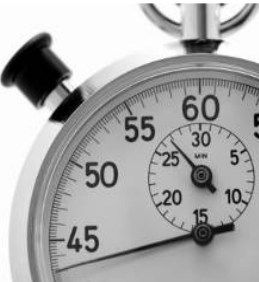Competitors
Competing Teams
Track 1: Smartphone (onsite)
Team name: THWS & cronn
Team members: Markus Bullmann, Max Werner, Toni Fetzer, Frank Deinzer
Affiliation: Technical University of Applied Sciences Wuerzburg-Schweinfurt / cronn GmbH
Description:
This technical description gives a short overview of the indoor localization system developed at the Technical University of Applied Sciences Würzburg-Schweinfurt.
Based on a CONDENSATION particle filter, the localization system is highly modular with respect to the sensors it is able to use.
Models exist for Bluetooth low energy beacons, Wi-Fi, and others.
Combined with a step and turn detection, it can also handle scenarios of total sensor outages.
All calculations are performed in real-time on a commercial smartphone even when using a high number of samples for approximation.
Track 3: Smartphone (offsite-online)
Team name: IPIN_CUMT
Team members: Zengke Li, Meng Sun, Yiruo Lin, Qi wu, Pengkai He, et. al.
Affiliation: China University of Mining and Technology, School of Environmental Science and Spatial Informatics
Description:
We present a robust smartphone-based indoor positioning system integrating PDR, WiFi/BLE fingerprinting, and barometric sensing. Key components include: 1) a CAE-UMAP-IWKNN pipeline for discriminative RSSI feature extraction and matching; 2) enhanced PDR with orientation correction using WiFi-inferred headings; 3) floor classification via dual-branch CNN combining RSSI and pressure data; 4) sparse fingerprint database generation through PDR interpolation and Kriging; and 5) final fusion using map-constrained graph optimization to produce accurate 3D positions. The system addresses signal variability, device heterogeneity, and multi-floor challenges effectively.
Team name: THWS & cronn
Team members: Markus Bullmann, Max Werner, Toni Fetzer, Frank Deinzer
Affiliation: Technical University of Applied Sciences Wuerzburg-Schweinfurt / cronn GmbH
Description:
This technical description gives a short overview of the indoor localization system developed at the Technical University of Applied Sciences Würzburg-Schweinfurt.
Based on a CONDENSATION particle filter, the localization system is highly modular with respect to the sensors it is able to use.
Models exist for Bluetooth low energy beacons, Wi-Fi, and others.
Combined with a step and turn detection, it can also handle scenarios of total sensor outages.
All calculations are performed in real-time on a commercial smartphone even when using a high number of samples for approximation.
Track 4: Foot-mounted IMU (offsite-online)
Track 5: Smartphone with navigation robot (offsite-online)
Team name: 906 team
Team members: Deng yonheng,Chen ziheng,Meng xiangxi,Li zekun,Tang xiaodai,Ding zhenke
Affiliation: Beijing University of Posts and Telecommunications
Description:
This system is a fusion-based indoor positioning solution that integrates IMU, UWB, quaternion-based orientation estimation, and AOA (Angle of Arrival) to achieve high-accuracy real-time localization. The IMU captures acceleration and angular velocity during motion, and quaternions are used for robust orientation estimation. UWB provides precise distance measurements, while AOA supplies spatial angle information. By fusing multi-source data and applying error compensation, the system enhances both accuracy and robustness, making it suitable for indoor environments with dynamics and multipath interference.
Team name: Revenge of Dream Hunters
Team members: Ruisong Wang, Hiroya Yamashiro, Xurui Zhang, Xinran Zhao
Affiliation: University of Tsukuba
Description:
Our competing system is a PDR algorithm designed to accurately estimate a user's trajectory. The core method is a multi-sensor fusion approach centered on an Extended Kalman Filter (EKF). The PDR model uses ACCE and AHRS data to dynamically estimate step length based on the amplitude of vertical acceleration peaks in the world frame, providing greater accuracy than a simple constant velocity model. The EKF framework fuses this PDR prediction with high-precision measurements from UWB Tracking (UWBT) sensors, effectively mitigating the cumulative drift inherent in PDR. This system is robust against common non-walking movements, such as bending or sitting down, as it intelligently filters these actions by transforming accelerometer data into the world coordinate system before step detection.
Team name: KajiLab
Team members: Natsuki Nagao, Ryuto Tada, Ryuki Mizuno, Satoru Niwa, Kakeru Sakai
Affiliation: Aichi Institute of Technology, Kaji Laboratory
Description:
This system is an indoor positioning solution for xDR Challenge 2025, focusing on robustness, adaptability, and environmental awareness.
Core Mechanisms:
Map Matching: Constrains trajectories to the indoor map, preventing wall penetration.
Location-Specific Sensor Use: Selects the most reliable method per area—UWB in open spaces, VIO in visually rich zones, PDR in transitional paths.
Exhibition Anchoring: Exhibition objects are defined as stopping points; when users pause nearby, estimates are anchored to these landmarks.
Supporting Technologies:
The system integrates PDR, VIO, and UWB, acquiring data via the EvAAL API server and fusing them with the Localizer class under multiple operation modes.

Team name: CARELab
Team members: Hideaki Uchiyama, Huakun Liu, Yutaro Hirao, Monica Perusquía-Hernández, Kiyoshi Kiyokawa
Affiliation: NARA Institute of Science and Technology
Description:
The competing system estimates indoor position and orientation by tightly coupling IMU and UWB measurements. Position is obtained through trilateration of UWB ranges, while orientation is tracked using an Attitude and Heading Reference System (AHRS) driven by accelerometer and gyroscope data. The system relies on direct sensor fusion through filtering, typically using an extended Kalman filter, without incorporating visual odometry. This approach provides absolute positioning from UWB anchors but is more sensitive to multipath effects and lacks drift correction from vision-based cues.
Track 6: Smartphone on vehicle (offsite with onsite survey)
Team name: A Team
Team members: 陈世一、孙雪航、王琰、旷俭、郑镇奇、许立平、曹黎
Affiliation: Wuhan University, 深圳传音控股股份有限公司
Description:
The system integrates Pedestrian Dead Reckoning (PDR), Vehicle Dead Reckoning (VDR), fingerprint matching, GNSS, and scenario recognition for accurate indoor and outdoor localization. A deep learning–based PDR processes smartphone IMU data to estimate 3D displacement, while VDR leverages vehicle motion constraints to improve accuracy. Pre-collected Wi-Fi, Bluetooth, and magnetic field fingerprints enable absolute position correction. GNSS data, when available, is fused with IMU through factor graph optimization. In GNSS-denied environments, PDR, VDR, and fingerprint matching ensure continuity. Scenario recognition (e.g., elevator, escalator, handheld, in-vehicle) enables real-time switching to the most suitable localization algorithm, ensuring robustness across diverse environments.
Team name: Nav_PolyUer
Team members: YU Yue, Wang Jingxian, Bai Shiyu, Lv Zhen, Lin Feifan
Affiliation: The Hong Kong Polytechnic University
Description:
Our system uses a self-developed positioning method that is driven by both data and physical models. By integrating sensor data from multiple sources, it simultaneously supports vehicle-mounted and different handheld models to adapt to users' daily mobile phone usage habits and achieve accurate positioning result.
Track 7: 5G CIR + IMU (offsite-offline)
Team name: CUMT-HC
Team members: Teng Wang, Jinchao Sun, Jie Liu, Yaohui Wang, Nanshan Zheng, Guoliang Chen, Meng Sun
Affiliation: School of Environment and Spatial Informatics, China University of Mining and Technology
Description:
According to the provided information of Track 7, we propose a hybrid localization approach that combines 5G fingerprinting and pedestrian dead reckoning (PDR) through particle filtering. Specifically, amplitude and phase information are extracted from 5G CIR data, preprocessed, and then fed into a lightweight convolutional neural network to generate position estimates. In parallel, four types of inertial measurements are utilized for step detection, step length estimation, and heading estimation, producing PDR-based trajectories. Finally, a particle filter fuses the outputs of 5G fingerprinting and PDR to achieve accurate and reliable localization results.
Team name: THWS & cronn
Team members: Frank Deinzer, Max Werner, Sebastian Baader, Markus Bullmann, Toni Fetzer
Affiliation: Technical University of Applied Sciences Wuerzburg-Schweinfurt / cronn GmbH
Description:
This technical description gives a short overview of the indoor localization system developed at the Technical University of Applied Sciences Würzburg- Schweinfurt. Based on a particle filter, the localization system is highly modular with respect to the sensors it is able to use. Models exist for 5G, BLE beacons, Wi-Fi, UWB and others. Combined with a step and turn detection, it can also handle scenarios of total sensor outages. All calculations can be performed in real time on a commercial smartphone or offline on a standard Linux system.
Team name: bupt_team
Team members: Dequan Quan,Qing Pan,Renjie Fang,Mingyang Ma,Xiao Jiang
Affiliation: Beijing University of Posts and Telecommunications
Description:
By combining high-dimensional environmental fingerprints from 5G CIR and motion information from smartphone IMU, the goal is to achieve robust and high-precision indoor positioning in complex environments, handling heterogeneous propagation conditions and fusing multi-source asynchronous data. Rough position estimates from CIR are fused with motion information from IMU to achieve more stable and accurate indoor positioning.Using deep learning methods and IMU processing.
Team name: DFKI IN
Team members: Dennis Salzmann, Till Ruppert
Affiliation: Federal Ministry of Research, Technology and Space (BMFTR) within the project »Twin4Trucks« (13IK010F)
Description:
The system fuses high-dimensional 5G Channel Impulse Responses (CIR) with smartphone inertial measurements (IMU) in a sliding-window formulation: a gated recurrent unit (GRU) predicts the 2D position for the last step of each window. We first establish a simple baseline using linear layers on frame-wise features, then optimize a recurrent architecture and training hyperparameters. Evaluation follows the Track~7 criterion based on Euclidean error and the third quartile (75th percentile). Finally, we apply a post-hoc Unscented Kalman Filter (UKF) that treats the network’s output as a measurement and uses IMU acceleration for short-term smoothing, and we outline a path toward LOS/NLOS-aware gating, differentiable filtering and stronger sequence models.

